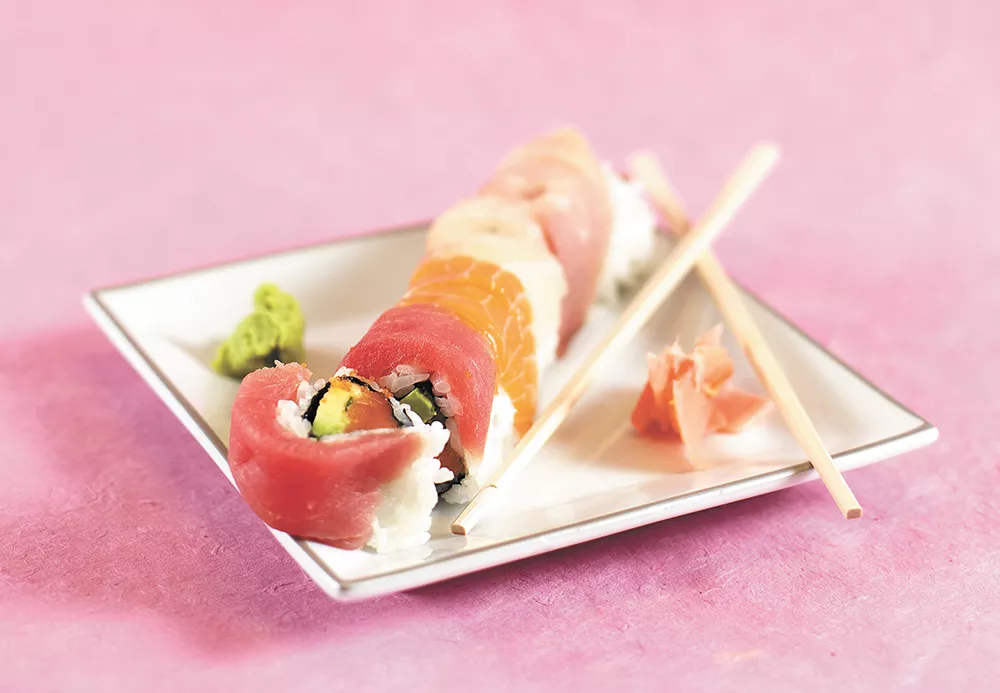While sushi may no longer seem like the most exotic cuisine in town — you can even find it being rolled in grocery stores — there is still some mystique and perhaps a little fear surrounding this Japanese culinary delight.
Freshness is mandatory for peace of mind, and not all sushi restaurants are created equal. When you do find a restaurant you like and fish that you trust, wading through extensive options can be overwhelming. With the help of sushi expert Kevin Na, owner of Sushi.com, we dispel some sushi myths and discover the perfect meal for first-timers and sushi veterans alike.
From Japan to California and beyond
The practice of eating sashimi, raw slices of fish, goes back centuries in Japan.
Early forms of sushi were simply cured and fermented meats and fish; vinegar-flavored rice was introduced in the 19th century to mimic this popular savory/sour umami flavor of fermentation without the wait.
Sushi first gained popularity in the United States in the 1970s with the now ubiquitous California roll, a sushi roll, or maki, combining rice, cooked crab salad, avocado and cucumber. Much of today's sushi highlights this fusion approach. Vinegar-flavored short-grain rice and raw, steamed, seared or fried fish, vegetables, seaweed, fish eggs, sauces and even bits of crunchy fried tempura batter are combined to create unique maki, and sushi chefs pride themselves on pairing flavors that are delectable and satisfying.
"Our chefs and I think about how the fish will match with the sauce and vegetables. We like to put a lot of stuff in ours. We have good combinations. We really think about our rolls," says Na.
"Nigiri, small portions of sushi rice, highlight simple toppings such as slices of raw or steamed fish or tiny omelette pieces," explains Na. "Its taste depends on who makes it. The cut is different, the rice is different. Different thinness and thicknesses of slices of fish taste different."
For the novice
If it's your first time eating sushi, say so.
Be honest with your server or sushi chef, and don't be afraid to admit if you don't know what something is. Your server will be happy to help you make the best choices for your palate. For newbies, Na recommends ordering pan-fried gyoza and edamame as appetizers and a few maki with cooked fish. Combination rolls, which can include cooked and raw fish, vegetables and sauces, are an adventurous and popular way to try raw fish.
"We ask, 'Are you ready for raw fish?' If you can't handle raw, we suggest cooked, like fried shrimp, fried soft shell crab or vegetable rolls. Even with raw rolls we can do seared fish," says Na. "The texture is important. People feel more comfortable with combinations. If they can handle combinations, we'll move to the raw."
For the pro
Sushi.com is famous for its lush salmon, which practically melts in your mouth, but if you're a sushi pro, Na recommends trying fresh, seasonal favorites. Although Na and crew source most fish year-round, seasonal highlights include Copper River salmon, bluefin tuna, abalone, live shrimp, oysters and sea urchin.
"The most popular sushi in Spokane is salmon. We get the whole salmon and prep it here," says Na. "Even raw, people feel more mentally comfortable with tuna or salmon. There is a bad stereotype about eel, but our eel is delicious. Some people really love sea urchin, or really hate it. It's not moderate at all."
Don't drown your meal
Avoid drowning your sushi in soy sauce, wasabi and ginger.
Nigiri is meant to be enjoyed for its fresh flavors, gently highlighted by the vinegar in the rice and just a little soy and wasabi. The distinctive layered flavors in maki suffer from too much salty soy and spicy wasabi.
"From the chef's point of view, when you are at a nice steak restaurant, you don't ask for A-1 sauce. A little soy is OK, but too much is insulting," says Na. ♦

